Author Archives: 2010admin
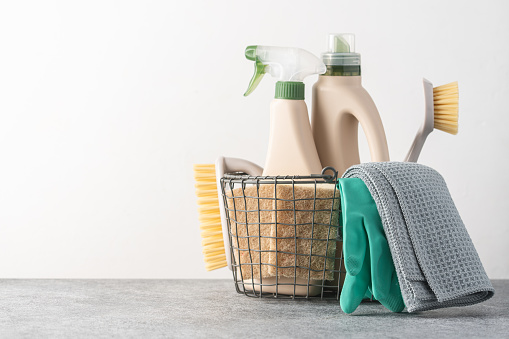
Ah, spring is in the air — and so is all the dust and clutter that winter left behind. While everyone knows it’s the season of fresh starts and deep cleaning, there are a couple of areas that often get forgotten in the process. While many of the 11 spots we mention in this list may seem fairly minor or obvious, we bet there’s a good chance you wouldn’t have thought of it without us. You’re welcome.
- Take Inventory of Cleaning Supplies
First things, first — you can’t start cleaning without the right supplies! There’s no point in trying to freshen up your home with old or dirty equipment. Make sure you have the appropriate solutions and disinfectants for the areas you’re cleaning, and swap out any old brooms or brush heads. Your cleaning closet needs some rejuvenation every now and then just as much as your home does! - Clean Your Toaster Tray
We know dumping crumbs from the toaster tray in the trash is probably something you do frequently, but when’s the last time you gave it a good scrub? Take the tray out and give it a deep soak in warm, soapy water. Or try an agent like Lime-A-Way for the pesky, stuck on grease and food remnants. The same applies to any and all small appliances in the kitchen. A thorough clean every now and then is your best chance of keeping unwanted pests and bugs from joining you in the kitchen now that your windows are open again! - Clear Your Drains
It may not be a mess you can see, but thanks to soap, water, and grime flowing through your drain every day, there’s going to be build up. But before you grab bleach or ammonia that can cause erosion over time, try a more natural solution. Pour 1⁄2 cup of baking soda and one cup of vinegar down the drain separately and then run some hot water to rinse. By giving your sink pipes and garbage disposal a deep clean every so often, you can prevent bigger clogs and issues, while also eliminating any foul smells that come along with it. - Toss Old Beauty Products
We’re guessing there’s a good chance your makeup drawer or bags have some items in there older than 3-6 months. It happens to the best of us. But this is the shelf life of most cream or gel-based makeup products — so if you do, it’s time to say goodbye. Any girl knows that makeup can pile up quickly, so start by sorting through what you use on a daily basis, for special occasions, and your back up supply. Organize them into categories, like hair, eyes, lips, etc. The better you can see what you have, the better you can stay on top of regular audits. Oh, and either use that free sample, or throw it out now. - Dump Your Junk Mail
In today’s highly digital/paperless world, somehow we all still end up with a ton of traditional junk mail. Whether you keep forgetting to cancel that subscription or it’s those never-ending donation requests, take a minute to weed through everything you’ve accumulated before tossing away the trash or filing things you want to keep. Empty your recycling bin and make an effort to cancel or update preferences to anything you don’t want to receive anymore wherever you can. And if anything is being tossed with any personal info on it like bills or credit card offers, make sure you put them through the shredder first. - Sort Desk Drawers & Electronics
Desk drawers are notorious for becoming a black hole to all things random. But the out of sight, out of mind philosophy is never good in this case — especially when it means packets of ketchup sitting in there for months. Rummage through each of these drawers to determine what’s still useful and what needs to go. For the items that stay, sort them by type and try utilizing a drawer organizer to keep everything in place and in sight.For electronics — before tossing old chargers and cords, read hup on local guidance for e-waste to make sure you’re disposing properly. And consider different donations or mail-back programs that can put those old items to use again in another home.
- Deep Clean Your Washer and Dryer
Yep, even your washer needs a good wash every now and then too. Run a cycle using white vinegar and baking soda. A store-bought, pre-mixed cleaner works just as well too. And don’t forget the lint filter. You should be cleaning this out after every load, but the areas within the vents need attention too to ensure built-up debris doesn’t become a fire hazard. Use a duct brush or vacuum to clear out all the lint that may be trapped within the ventilation units. - Rotate Your Mattress
Don’t wait until you have trouble sleeping to give your mattress a turn. Even when only one person is using a bed, it can still get lumpy or uneven over time — especially if you often sleep on the same side. You may notice some sagging in areas simply by looking, or it may be a little less obvious, but it doesn’t hurt to switch it up. Strip the bedding and either rotate the mattress so the foot becomes the head or flip the mattress over so the bottom becomes the top (you get the idea). Newer mattress designs should eliminate the need to flip, so make your own assessment. - Trash Old Spices & Canned Goods
Sure, the best thing about non-perishables is how long they last — but there is a limit (ironic, we know). Go through all your spices and canned goods to check expiration dates. Canned meats and veggies can last up to 2-5 years, but high-acid, canned fruits and tomatoes only last 12-18 months. Try using a first-in, first-out rule to keep all canned items in your pantry at their peak quality. - Get Underneath Area Rugs & Furniture
Usually when we run a vacuum through the house, we tend to stick to those easy-to-reach spots — ya know, the ones that don’t require you to bend over backwards. But because of that same reason, those spots need extra love this time of year. It’s time to really put that vacuum hose and/or those muscles to work. Move furniture and roll up rugs and rug pads to clean underneath. And put in some extra effort to reach under the bed or larger furniture pieces where dust goes to hide. - Remove Wall/Floors for Scuffs
Check the walls and floors for any marks caused by shoes, furniture, or toys. This includes underneath islands or bars too. Use a damp, soft cloth with a little dish soap (a Magic Eraser works great too) to remove any scuffs and dab some touch up paint on any dings or scrapes. It’s a little effort for a much cleaner look.
For more ways to ensure your home is as clean, healthy, and comfortable as possible this Spring, contact the experts at Madsen today.
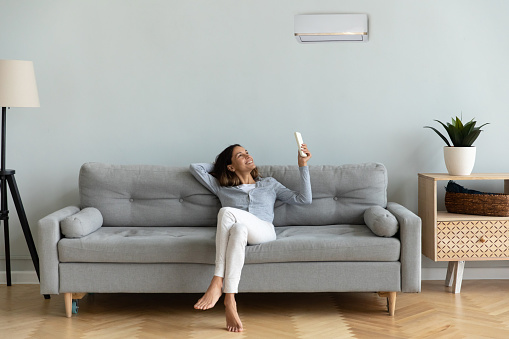
We all love the extra daylight and sunshine that springtime brings. But is your heating and cooling system prepared to go from one extreme to the other this year? We don’t expect your HVAC to always be top of mind from season to season. But for us, it is. So we’ve compiled all the most common questions you’ll want answered about your cooling system before temperatures really start rising.
- How often do air filters need to be changed?
This is one of those “it depends” There are two main types of filters, both of which are disposable. If you have a cheaper, fiberglass air filter, we’d recommend every 30 days. If you have pleated filters, which are typically more expensive, you should be good with every 90 days. Media or CleanEffects filters can last a little longer, only needing to be replaced about once a year. It will also depend on your usage — the more often you use your system, the less you should put off swapping your filters out. - What are the advantages of high-efficiency air filters?
While not 100% necessary, high-efficiency filters can do wonders for those with allergies or respiratory issues. Proper air filtration is crucial to the health of your family — and your unit too. By preventing dust and dirt from building up in your system, air filters help keep your air clean and your system running efficiently.High-efficiency air filters only improve that process with the ability to trap nearly 100 percent of particles as small as 0.3 microns (aka very, very small). Regardless of what you choose, changing them regularly is still a must.
- How long does HVAC equipment last?
The average HVAC system lasts 10-15 years. But the more time that passes, the less efficient your unit will become. In fact, the minimum SEER for any ACs manufactured now is 13, despite many systems exceeding that. Err on the side of caution and start looking at new options around the 10-year mark. Even if there are no major issues or red flags at the time, a more modern system will help you save on your energy bills. They also typically come with a 10-year warranty, which means you’ll be set for a while. - How do I know when it’s time for an AC replacement?
Speaking of replacement, there are some signs that will tell you when it’s definitely time to say goodbye — like if the temperature of the air coming from your vents isn’t strong enough, or it’s not the right temperature. Also, if you hear weird sounds like rattling, scraping, or screeching, or you notice excess moisture or leaking from your unit. If your bills have significantly increased but your usage hasn’t, that’s another good indication that it’s time for a new unit. - How often should I have my air conditioning unit serviced?
As a general rule of thumb, make it an annual thing. The longer you put it off, the less effectively your unit will run. And that will only speed up its deterioration and shorten its overall lifespan. By scheduling that routine maintenance each year, you’ll not only save on energy bills, but also any major repairs that tend to result from negligence. - What are the benefits of a programmable thermostat?
A programmable thermostat isn’t just another modern tech gimmick; it can save you a lot on your energy bills by allowing you to better control your heating and cooling use from anywhere. Instead of having the cold air pumping all day when no one’s home, you can set a timer to raise the temperature when you’re gone and lower it prior to your arrival. A smart thermostat will make sure you’re saving energy, even if you forget. - Why are heat pumps more efficient?
The reason heat pumps are one of the most energy efficient HVAC systems out there is because they don’t burn fuel to provide heat. Instead, they transfer heat energy from one source to another. This is why they function as both a heating and cooling system — making it as simple as the flip of a switch to go from winter to summer mode. As a result, you can minimize the amount of systems in your home that need repairs, maintenance, and replacements too. - How can I improve the air quality in my home?
The best way to improve air quality is to eliminate unwanted air from coming in. And the best way to do that is to seal your duct system. After that, you can either clean your existing filtration system or look into installing a new, more efficient one. - What should I set my thermostat to in the spring and summer?
When temperatures rise outside, it’s tempting to blast the cold inside, but finding the right balance between comfort and self-control will pay off big time. We recommend setting your thermostat to 75 degrees, or 72 at the lowest, with your fan set to AUTO, instead of ON. Each degree below 75 will cause your energy bill to go up 3-5%! - What are some ways I could keep my home cool more efficiently/lower energy costs?
You have a lot of options! For one, you can swap your current AC unit for a newer, more efficient one. While it may be a larger initial investment, it will have a big impact on energy bills and comfort in the long run. If you’re not quite there yet, you can set your thermostat to the predetermined temperatures listed above.Another helpful hack is to make sure your vents aren’t blocked by furniture or curtains. This will help air flow more evenly throughout your home. And if it’s a room you rarely use, shut the vents so you can direct the air to cool the areas of your home you spent more time in.
Ceiling fans are another great way to cool down a room without using a lot of energy. If you don’t have them, consider installing them in bedrooms and living areas. If you do have them, use them. The U.S. The Department of Energy reports that just one ceiling fan will allow you to turn up the thermostat as much as four degrees without sacrificing comfort.
And as always, remember to schedule regular maintenance from a professional to keep all units running their best.
- What can I do if my system doesn’t work well in certain rooms?
Variation from room to room is fairly normal, but significant differences in distribution can be a sign of air filtration issues or improperly designed ducts. If you’re having issues, contact our professionals to come take a look.
As you prepare for the warmer weather this spring, don’t forget about your cooling system! Contact our experts at Madsen with any questions you may have to help keep your home comfortable all season long.
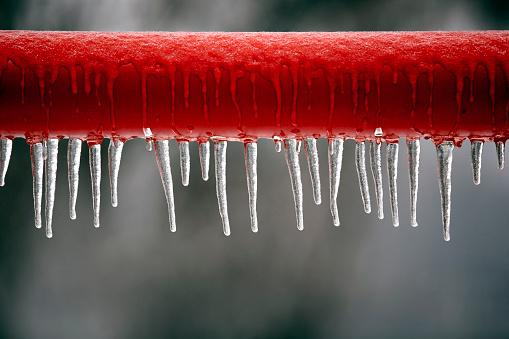
Spoiler Alert: Winter is already here. But it’s never too late to take measures to protect your home from cold, harsh conditions — until it is. Let’s not wait until the next big snowstorm to find out.
Brutal winter weather can cause damage to both the outside and inside of your home. Whether it’s a pesky air draft or a burst pipe, damage caused from sub-freezing temperatures can be inconveniently expensive. If you haven’t already, it’s important to prepare your home — even now. Check out our winter home maintenance checklist to keep your home safe and warm from the worst winter may still have in store.
- Focus on Your Heating System
One of the most obvious home necessities during the winter is heat, which makes now a great time to maintain or upgrade your heating system. Your home should be the place you feel most comfortable, and freezing temperatures shouldn’t change that.
By hiring a professional like Madsen to inspect your boiler, furnace, and HVAC system, you can make sure the need for repairs, cleanings, or upgrades can be taken care of to make sure your system is running as efficiently and safely as possible. Not only will it help ensure you’re nice and warm the rest of winter, but it will also save you from costly maintenance of bigger problems that may occur if the small things go ignored.
- Check For Air Leaks
As temperatures drop from day to day, there are certain areas more susceptible to heat loss. Unwelcomed drafts can sneak into your home through door frames, windows, or other small gaps in your foundation. We often crank the heat when we feel a draft, which increases our energy bill without fixing the root of the problem. Instead, try to find the source of the draft and use a more affordable, DIY solution.
Air leaks can be easily stopped by:
– Putting weatherstrips or caulking around vulnerable areas
– Insulating windows with film
– Adding insulation in the attic to prevent ceiling heat loss
– Covering the underside of door frames with thick towels to close the cracks
- Prevent Frozen Pipes
Frozen pipes can become burst pipes that negatively affect your entire home. It may result in water and structural damage, unsafe conditions (if outside), and a hefty repair bill. Frozen pipes aren’t uncommon in areas of the home or yard that aren’t getting a lot of use in the winter (swimming pool supply lines, hose bibs, water sprinkler lines, unheated basement/attic pipes, etc.) or even those with little or no insulation in exterior walls, so be sure to stay on top of your taps.
Signs of a frozen pipe include a lack of running water, visible frost on any exposed water pipes, sections of drywall or ceilings looking damp, or strange odors coming from the faucet or drain. You can prevent frozen pipes by applying electrical heating tape to exposed pipes, letting your faucets drip with cold water all day, or just keeping the garage door closed to keep cold air out of the house and away from the plumbing.
- Be Storm-Ready
Snowstorms can be pretty unpredictable — let’s face it, the weatherman isn’t always right. So while you may always be on top of the weather radar, it’s smart to ensure your house is prepared for anything at any time by checking off essential to-do’s like:
– Get an emergency kit with water, canned goods, and flashlights
– Have snow shovels or blowers to make clearing your driveway after a blizzard easier
– Trim tree branches to help you avoid any structural damage from high winds
– Invest in a portable generator in case of a long-lasting power outage
– Waterproof your home by installing a sump pump into the basement and routing gutters away from your home
- Maintain the Water Heater
There’s nothing quite like a hot shower or warm bath when it’s freezing outside. But there’s nothing worse than hopping in and getting nothing but ice-cold water.
Prevent hot water loss by servicing your water heater. Check the heater’s temperature, test the pressure valve, and inspect the anode rod. You can also add insulation to the pipes and tanks too as an added safeguard. If you don’t feel comfortable taking these tasks on yourself, consider calling a professional to help do it for you.
- When in Doubt, Call the Pros
Winter maintenance isn’t always the easiest. And even with a helpful guide like this, you may not know everything you should be looking for. If you need help making sure your home is as safe and warm as it should be this winter, contact Madsen Inc. today.
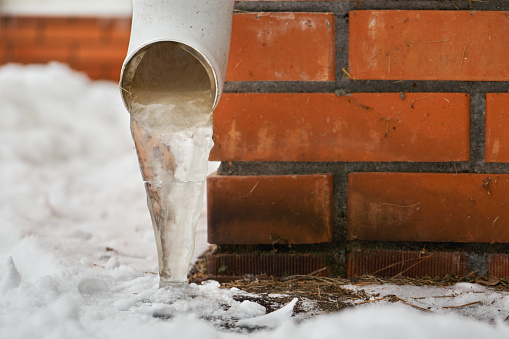
While many of us spent most of December decking the halls, there’s a chance you got a little lost in the décor and forgot this important winter home prep. While staying on top of your plumbing is important all year long, it’s especially important when temperatures dip below freezing. Let’s not encourage the winter blues with some serious pipe issues this year.
Frozen pipes not only deprive your home of its water supply until they’re completely thawed, but if also not treated quickly enough, ruptures can cause catastrophic water damage — and major costs.
If you haven’t prepared your pipes for the winter yet, don’t worry. It’s not too late to improve your plumbing system and avoid expensive repairs. Here are five quick tips what you can do now to prepare your pipes for the winter weather.
Start Outdoors
There are several water lines around the exterior of a house that can cause pipe problems. To avoid any flooding this winter, start with outdoor water sources. Disconnect and drain all hoses, as these can freeze and lead to a buildup of pressure that will cause pipe bursts. You should also drain the water supply to any faucets of your outdoor living spaces and make sure they run dry. Then protect your outdoor pipes from freezing by adding insulation, such as an outdoor faucet cover, that you can buy online or at any home improvement store.
Insulate
Pipes in areas like your attic, crawl space, or garage have a much easier chance of freezing especially when temperatures drop below 20 degrees. Utilizing heat cables or insulating these spaces will better protect your pipes from the cold and prevent them from causing damage in other areas of your home too. Insulation is easy to find, affordable, and simple to set up. And when paired with heat cables, you can rest assured your pipes are nice and warm.
Keep Your Home Warm
The best way to fight the cold is to simply keep your home warm. Maintaining a temperature of at least 55 degrees Fahrenheit all winter is your best bet in avoiding potential pipe bursts. If you have zoned heating, be cognizant of your thermostats during the winter. And if you’re going out of town, make sure you don’t turn your heat off.
Check around doors, windows, electrical wiring, and plumbing to make sure there are no air leaks making your heat work harder than it has to. Seal any leaks you do find with caulking, weatherstripping, or insulation where needed. And make sure you don’t leave the garage open, allowing cold air to affect the plumbing on neighboring walls.
Let the Water Run
On extra cold nights, a simple trick to avoid frozen pipes is to let your faucets drip. Pipes burst when water freezes and expands, which can be prevented when the water continues to flow. Let your taps along exterior walls drip through the cold. This eliminates the pressure that can build between your faucet and any ice blockage that may form.
Heads-up: If you notice the water pressure drops on one of your running taps, it’s a sign that your pipes are starting to freeze.
Open Door and Cabinets
If the pipes under your kitchen and bathroom sinks within cabinets, they’re often isolated from your home’s air flow. By opening these cabinets regularly, the warm air is better able to reach your pipes. It’s an easy task to keep your pipes warm enough to prevent ice buildup.
Your home should be your private escape from the cold this winter. Don’t let a frozen pipe ruin that for you and your family. If you want to avoid any major issues, make sure to incorporate these simple, preventative steps into your daily routine.
Need help catching up on this winter prep? Madsen is here for you! Our high-quality plumbing services will ensure that your pipes run smoothly all winter long. Contact us today to find the best solution for your home.
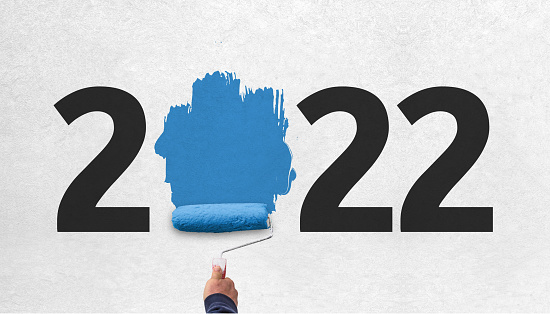
10 New Home Improvements to Kick Off the New Year
A lot of homeowners have big plans when they first move into their homes. Maybe it was redoing the outdated bathroom or adding that nice addition to the family room. But life can get in the way. And it becomes easier to just not do those home improvements you had planned. But you and your family deserve to love your home!
Fortunately, there’s no better time than the new year to finally find the time to make those changes. Whether your wish list had big transformations or small updates, let’s make that 2022 resolution to you to start those projects and really revamp your space. Not sure where to start? Here are 10 small changes you can make that will have a BIG impact.
Focus on the Exterior
Adding subtle changes to your front or back yard can completely change the curb appeal of your home. You can focus on smaller additions like putting new plantings by the entryway, power washing the walkways, buying new outdoor furniture, or painting the front door. If your family loves being outside, consider ways to update your outdoor living space. A inground or portable fire pit is perfect for the spring and fall, while expanding the patio area or adding more exterior lighting will help those summer cookouts last all night long.
Organize!
Is clutter a constant in your home? In the new year, look to add organization and storage to your home to keep things tidy. Take advantage of extra rooms like the basement, garage, and attic to find space for storage. Adding vertical shelving, storage baskets, or vertical units will help you get things off the floor and make it a lot easier to find things when you’re looking for them.
Upgrade Flooring
2022 is the perfect time to rip out that old carpet from the 80’s. If there’s hardwood underneath, upgrade your flooring with new paint or staining, which can be done by a professional for pretty cheap, or a fairly simple DIY project for you. If you already have wooden flooring and are looking to add a little flare, try to find a stylish area rug to add for a splash of color and fun. At the very least, a deep professional cleaning of the carpets you do have, could make a huge difference.
Think Sustainably
What’s a great way to help the environment from home? Replace common items with more sustainable alternatives. Adding conscious LED light bulbs or a smart thermostat are easy ways to ensure that your home stays energy efficient. The perk is that it also lowers your utility bills. Also make it a resolution to turn off unnecessary lights when you leave the house, use more power strips, seal air leaks, and replace filters. If you’re feeling real ambitious, maybe 2022 is the year that you finally splurge on solar panels.
Invest in Safety
Give yourself a little extra peace of mind in the new year by adding new safety features to your home. Install motion detector lights or reliable video surveillance at all entry points and blind spots throughout the yard. Ring doorbells are also a safe way to see who approaches your home, plus recordings you can reference at any time, and also includes a microphone system that allows you to talk to visitors from anywhere.
Weatherproof Windows
In colder climates, heat is a sacred once winter rolls around. Even with the thermostat set to max, simple drafts can ruin your comfort and increase your utility bills. The solution: weatherproofing your windows. Patching holes with caulk or applying weather strips will help your whole family stay nice and toasty in the coldest months of the new year.
Declutter for a Fresh Start
Nobody likes clutter, and after all the time you’ve spent at home, it’s easy for things to pile up. Purge your home of unnecessary items like excess/old furniture, electronics, or clothes to free up space and give yourself room to start new. Donate your items to the local thrift shop or put items up for sale online to make some extra cash. You can also rent out a storage unit if you can’t let go just quite yet. The more space you have, the more motivated you’ll be to tackle other items on your home improvement list.
Swap Out Light Fixtures
New light fixtures can completely alter the look of your home, and they don’t need to be expensive. Affordable light fixtures are readily available and can change the vibe of your entryway, kitchen, or master bedroom in the blink of an eye. Chandeliers, hanging lights, and even just swapping out older lighting for a statement piece can be a game changer.
Upgrade Countertops and Cabinets
Countertops can be a tell-tale sign of an outdated home. Resurfacing your laminate countertops for a new look is as simple as painting, while investing in completely new stone or tile is a little more of an undertaking, but totally worth it. Either option can bring a room back to life. From the kitchen to the bathroom, new countertops are a worthy investment!
Add a splash of color
There’s not much a fresh coat of paint can’t fix. Whether it’s a new shade of the same color, or a totally new pattern or hue, new paint will give your rooms a fresh new look. While you’re at it, re-painting doors, trims, and furniture can also brighten an older room.
There are no limits to what you can do to upgrade your home in the new year. And sometimes it’s the simple things that make a big difference. If you’re looking for help in implementing these upgrades, contact Madsen! From maintenance to installations, we offer high-quality service that will have your home looking brand new without breaking your 2022 budget.


